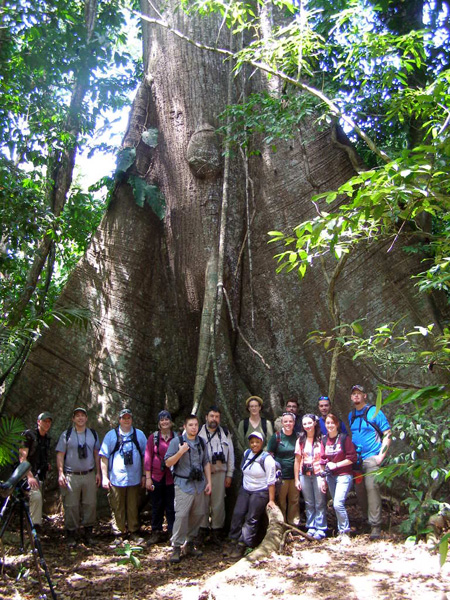Here is a nice article that appeared in the campus newspaper at Southern Illinois University Edwardsville.
Opportunities to study abroad are among the most exciting and rewarding experiences that a university can offer its students. For the upcoming summer, Rick Essner and Peter Minchin, both of the department of biological sciences at Southern Illinois University Edwardsville, are planning to take students to one of the most fascinating tropical countries in the world: Panama.
“Panama has a number of advantages,” said Essner. “The Smithsonian Institution has had a presence in Panama for years, going back to when the canal was built. And it was identified early on as a really important place for biodiversity.” The term biodiversity is the measurement of plant and animal species diversity in a given area. Panama is what is called a biodiversity hotspot.
“It has advantages in terms of being a setting for a lot of important tropical ecology research,” added Essner. “It’s also relatively close. So it’s an opportunity within a short flight to see one of the most bio-diverse places in the world.” In addition to the scientific advantages, there are also practical ones for conducting research in Panama.
“It also has some practical advantages because of the American presence down there,” said Minchin. “For example, they use the same currency. They call it balboas but it’s American dollars.” The Smithsonian station is on Barro Colorado Island, an island that was formed after the Panama Canal was completed. It’s fauna, Essner and Minchin said, is incredible.
“There have been some recent discoveries with trail cameras,” said Essner. Trail cameras automatically take photos when animals come around. “They found some large felids like ocelots, for example, that haven’t been seen in a while. They also are doing some work using telemetry and GPS units to track animals. They have got a really neat array of stuff where they can track movements of species all over the island.” Telemetry involves placing a radio on animals so that they can be tracked for research and conservation efforts. This technique is now being used even with insects.
“There is a diversity of foreign fauna there,” said Essner. “One of the things we noticed when we were on Barro Colorado was that we were seeing things there that you wouldn’t see on the mainland. Like little poison dart frogs that were historically really common, but which have now been affected by fungi that have moved through Panama and wiped out a lot of the diversity unfortunately.” One of the topics that students will learn about while visiting Panama will be biogeography.
“It’s all about what controls the diversity of species on islands,” explained Minchin. “It turns out that the area of an island is important, and also its degree of oscillation. It’s basically about the balance between the arrival rate of species and the local extinction rate. And both of those things depend on area, but they also depend on distance.”?Conservation on islands is extremely important because usually the populations of plants and animals living on those islands are endangered by the nature of the island. And the smaller the island, usually the more fragile they are.
“The smaller the island, usually the smaller the population,” said Minchin. “Small populations are intrinsically more at risk. Also, predation and things like that are more effective. So if introduced, predator species that arrive can wipe out several species very quickly.”
Next year’s trip will take place from mid-May to early June. Both professors expect to take around a dozen students and basically see most of the country. They plan to be in lowland rainforest, around Panama City, move to an area that’s a little dryer in the central part of the country, and also visit some highland cloud forest type habitats. In addition to nature studies, students will have the chance to learn about the local culture.
“Peter has arranged for us to go on a tour of an Embera village, one that I am really looking forward to,” said Essner. “That’s an indigenous tribe on the Caribbean side. We have plans to go on a dugout canoe trip up the Chagres River to visit this tribe with a native guide. And you encounter indigenous people there selling items that they hand make. Among my favorites are little statues that they carve out of the native palm nut. They carve them really elaborately and then they paint them.”
Students interested in participating in this trip will not need too many prerequisites, academically speaking, according to Minchin.
“I think we just set it to the first two semesters of biology, biology 150 and biology 151. It would be of benefit if they have had ecology, but we are not requiring it,” he added. They will be carrying with them standard field equipment used in ecology, including trail cameras and night vision cameras to detect animals that come around at night.
“We may bait these so that we can draw in some species we wouldn’t see normally,” said Essner, who quickly added that the trip is not all about animals.
“We have some plans to do some vegetation work, quantifying aspects of vegetation and habitat,” he said. “We’ll do observational work, like point count surveys for birds, a standard technique where you have an observer basically writing down all the birds that they see. So they will use binoculars and spotting scopes.”
